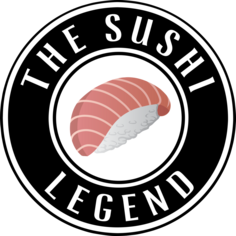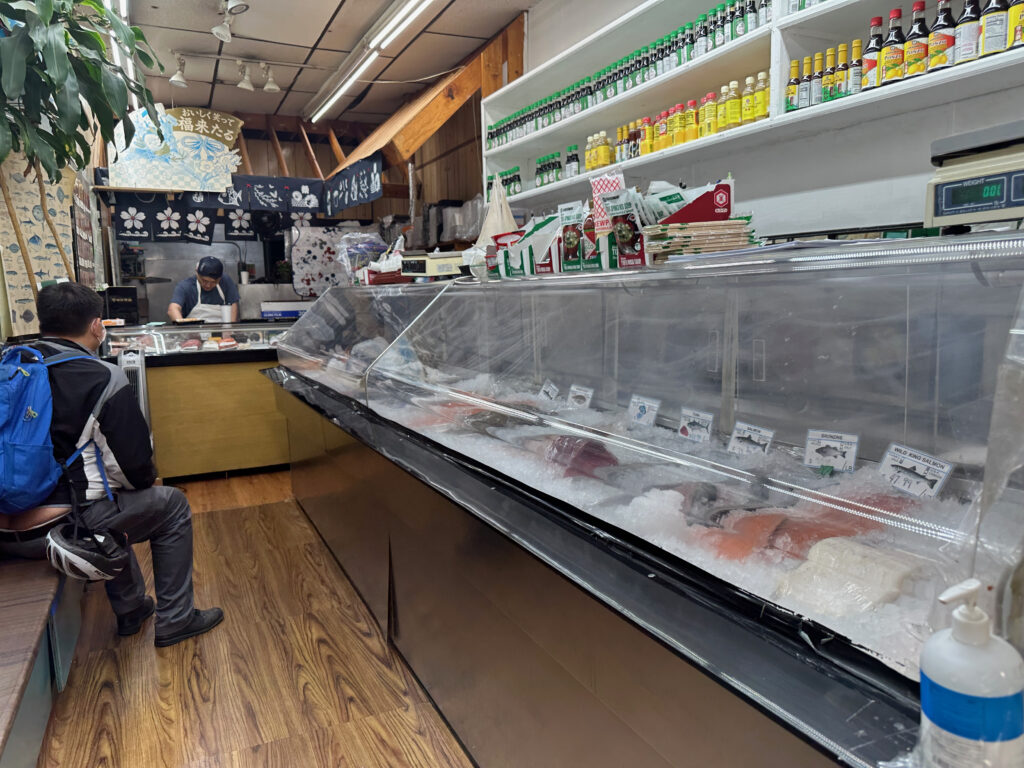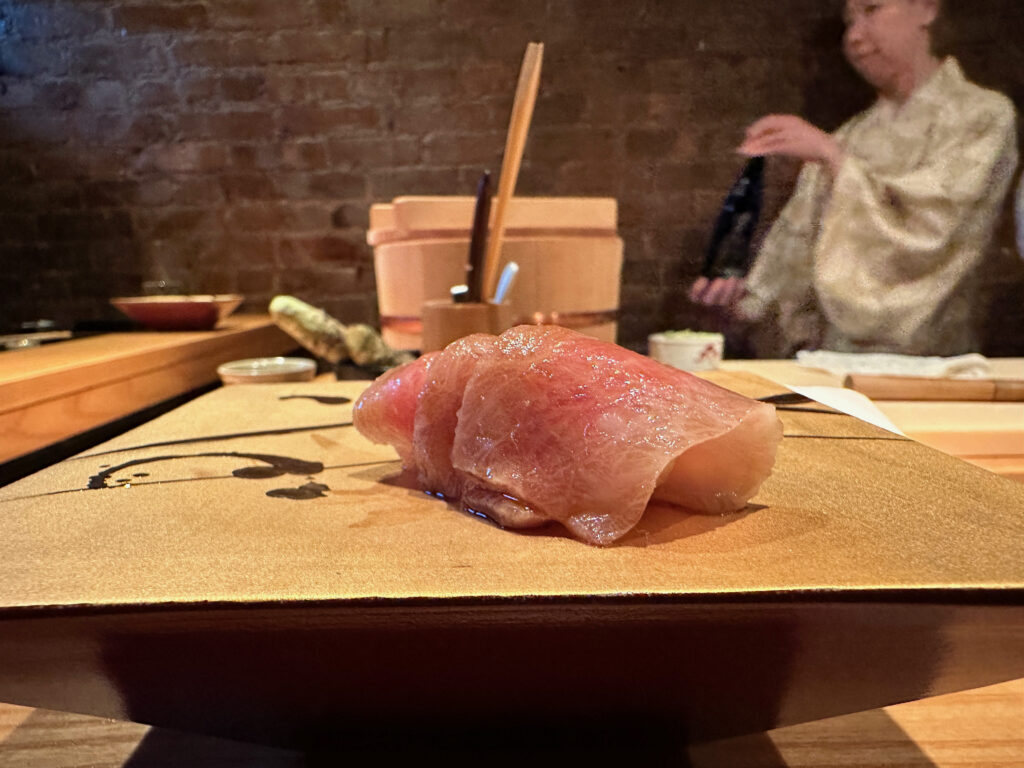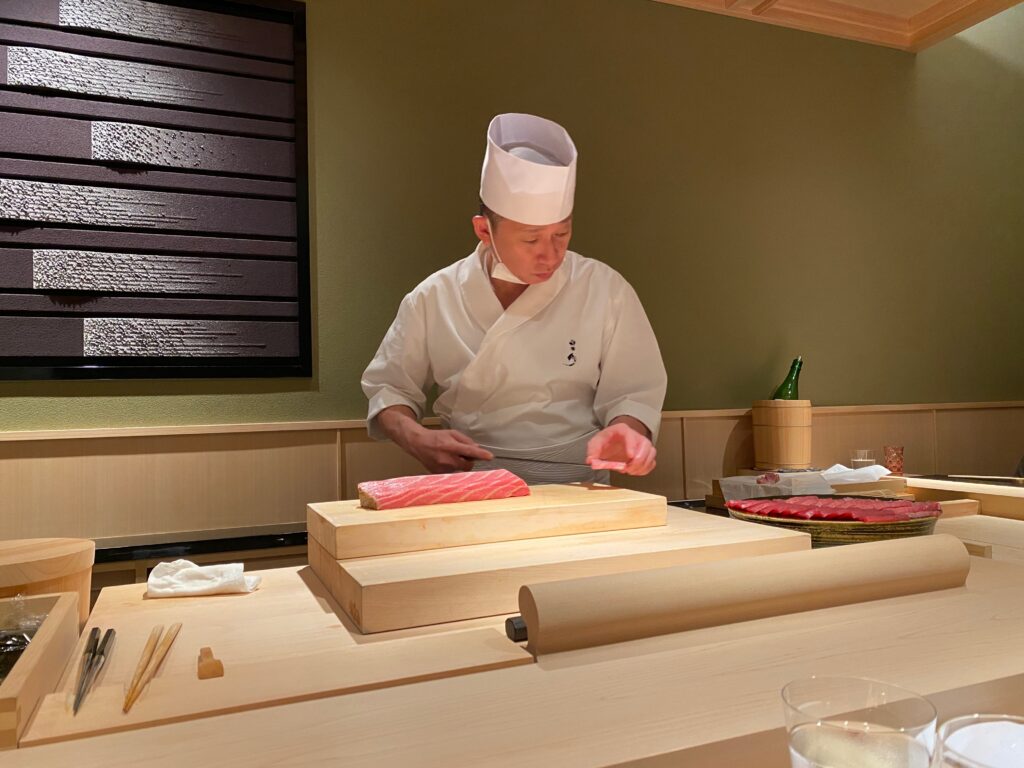It’s easy to forget that despite the massive proliferation of intelligent sushiya in New York and the broader continent, there’s still a large number of people that think a communal dorm shower like Zuma represents good sushi. Fairly certain that a Venn diagram of those people and the folks that think “Omakase” and tasting menu” are synonymous is probably just a circle. That said, I was still caught off guard when, at Sushi Kaito, a 2-year old, omakase-only sushiya in the Upper West Side, two erstwhile individuals entered looking for a menu, and then argued when told there wasn’t one. To their credit, the wonderful staff and management handled the situation calmly; not surprising, because Sushi Kaito is, above all else, an extremely warm and welcoming sushiya that takes on the character of its family-heavy neighborhood.
Owned and operated by Yoko Hasegawa, Kaito is an intimate, 12-seat sushi counter that sources much of its fish for the three nightly seatings directly from Japan. My 90 minutes there alongside a buddy felt more like eating in my cousin’s living room than a $125/per person sushi temple. And as an added plus, it happens to have a website that puts mine to shame (seriously, check it out and drool).
The options at Sushi Kaito are as delightfully simple as the surroundings: omakase 1 is 12 courses of nigiri, a starter sashimi set, a temaki and a miso soup. Omakase 2 has the same periphery, but ups the ante to 16 courses of nigiri featuring neta/tane (e.g. toppings) that are sourced directly from Japan. We chose option 2 in the pursuit of good journalism (slash out of gluttony), and at $120, it’s reasonable by Manhattan sushi standards.
Immediately, the pairing of raw and cooked fish in our starter “sashimi” plate reminded me of Sushi Tadokoro in San Diego. In this iteration, a Kunomoto oyster, black cod from Canada (which was news to me as a Canadian) and bonito were served together to whet the appetite rather than stuff the sides. Like a great piece of music, the best omakase experiences build to a crescendo rather than immediately dropping the bass
Our first two nigiri courses were Madai (red snapper) and Iwashi (Sardine). I wrote this on instagram (@thesushilegend), but Iwashi (below) is a naturally oily neta that is worth trying, particularly in autumn. I regret how rarely I eat it, especially given that the oil and protein of sardines are my personal Ambrosia.
One of the few missteps, Hotate-gai, from Hokkaido, followed next. Scallop is a tough neta to judge, because it’s natural flavour is a bit on the blander side, which is one of the reasons many Itamae add accompaniments like salt or combine it with stronger tastes like Uni, as Kousaka does. Here, the chef used rock salt from Peru, which I enjoyed, but I still found the taste muted, likely due to two factors: the concentration of the rock salt in one spot (see picture below), and the reserved use of Shoyu soy sauce. That said, it’s a nitpick, because the ingredients and preparation shine for the rest of the meal.
Unlike some other sushiya, Kaito separates their tuna courses. Akami, which the chef proudly announces is Bluefin, is first, but then followed by Sake (Arctic Char, pictured right), which is formed and delicately cerated so beautifully that it artfully highlights the chef’s technique.
To wit, O Toro arrives, but only after Buri (wild adult yellowtail), Ikura (salmon roe) and Uni (sea urchin). And delicious Chu Toro, marinated and boiled in what the chef described as a “sweet soy”, follows three courses later after Anago and Shima Aji. I don’t have a particular preference – Omakase intrinsically means leaving it up to the chef – but I’m sure some of you snobs out there prefer it together.
Ikura below is splashed with just enough Yuzu to highlight its flavour. On the late November night, the Ikura tasted exceptional, likely due to some mixture of preparation from Kaito’s staff and the time of year (Ikura’s typical season is late fall, early winter). The only drawback – again, a nitpick – was the size of the gunkan (battleship) nigiri, which were noticeably smaller than I’ve experienced both stateside and in Japan.
Other courses included a similarly sized Anago (sea eel), Shima Aji (Striped Jack), the almost translucent Botan Ebi (Sweet Shrimp) and Kinmedai (Goldeneye Snapper), which preceded the moist (hate that word) Tamago (Egg) that concluded the meal.
The atmosphere at Sushi Kaito, even on a cold November night, was warm and comfortable. And sure, that might have had something to do with the fact that we were seated on an actual heater, but it also reflects how helpful and friendly employees and management at Sushi Kaito are, without being overbearing. Granted, there were only two customers dining at the early bird special – yes, us – but it’s still a challenging line to walk when the staff outnumber the customers.
Kaito is small – 12 seats, 2 of which are on the aforementioned heater slash bench. But don’t let that deter you: with three seatings at a night, and a delicious (but rigid) menu that serves as a natural barrier to stray humans wandering in from the street, it’s worth your time.






